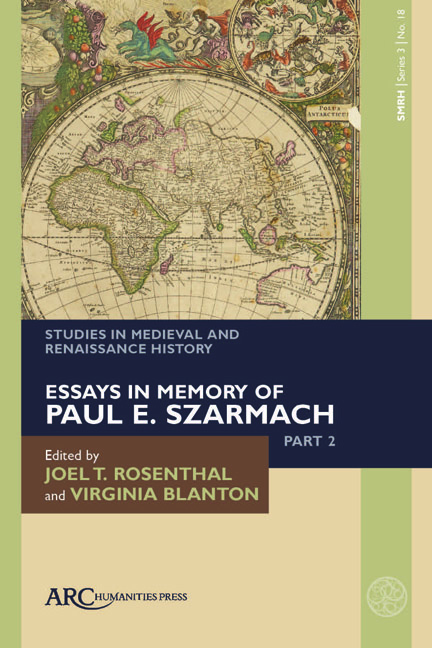Book contents
- Frontmatter
- Contents
- List of Illustrations
- Introduction
- The Development of Constantinian Themes and Their Manifestation in Writings and Coinages of Early England
- Echo and Icon : Life in Stone at Bewcastle, Cumbria
- Jerome of Strido at Chelles: The Legacy of Quedlinburg Codex 74
- Revisiting the Maaseik Zoomorphic Embroideries
- The Old English Version of Alexander’s Letter to Aristoteles and its Use of Binomials
- Agency and Obedience : The Afterlife of St. Swithun in Anglo-Saxon England
- B. and the Vita Harlindis et Renulae
- Wheelock’s Bede and Its Supplementary Materials : Goals and Methods
Echo and Icon : Life in Stone at Bewcastle, Cumbria
Published online by Cambridge University Press: 13 April 2024
- Frontmatter
- Contents
- List of Illustrations
- Introduction
- The Development of Constantinian Themes and Their Manifestation in Writings and Coinages of Early England
- Echo and Icon : Life in Stone at Bewcastle, Cumbria
- Jerome of Strido at Chelles: The Legacy of Quedlinburg Codex 74
- Revisiting the Maaseik Zoomorphic Embroideries
- The Old English Version of Alexander’s Letter to Aristoteles and its Use of Binomials
- Agency and Obedience : The Afterlife of St. Swithun in Anglo-Saxon England
- B. and the Vita Harlindis et Renulae
- Wheelock’s Bede and Its Supplementary Materials : Goals and Methods
Summary
many rivers to cross
many lichens to sing
Drew Milne, “News from Lichen Times”
STONE SPEAKS WITH many voices. It can be made to make music, like the stone xylophone made for Evelyn Glennie as part of the Ruskin Rocks project, which was established to explore the musical qualities of the stones of the Cumbrian Lake District. The project built on a tradition of making musical instruments from the local stone that went back to the nineteenth century, although outside of England musical stones are some of the earliest instruments ever created. A different type of sound can be created by the wind or breath blowing against or around stone. The Blowing Stone near Wantage (fig. 2.1) is the weathered remains of a standing stone and makes a noise if you blow into the correct hole. It could conceivably be understood as both a work of sculpture and a musical instrument. According to local legend King Alfred blew through it to summon his forces against the Danes, and according to a description in Tom Brown's Schooldays, its moaning sound can be heard for a distance of seven miles (eleven kilometres). Obviously, neither of these are examples of early medieval stone sculpture, but all stone makes sound when struck by human hands or breath or simply by the wind. Such interactions create vibrations that reach our ears as a series of waves, which, if we could see them, have patterns that have been made visible in the many images that have been taken of musical notes striking water. It is impossible to illustrate these patterns adequately in two-dimensional form but there are images and videos available on the internet, and anyone who has listened to music or singing inside a stone church has experienced some of the effects of musical notes hitting stone. Even if we may not be able to hear them with the naked ear alone, those effects are reproduced in miniature when notes hit the stone surfaces of the many early medieval crosses that are now parts of church interiors, like the eighth-century cross at Ruthwell, Dumfriesshire (fig. 2.2) or the tenth-century cross in Leeds Minster.
- Type
- Chapter
- Information
- Studies in Medieval and Renaissance HistoryEssays in Memory of Paul E. Szarmach, Part 2, pp. 17 - 32Publisher: Amsterdam University PressPrint publication year: 2024



